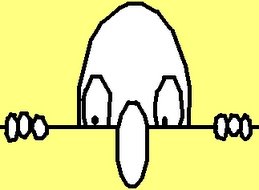As I have traveled over the years it has become apparent
that almost every community in the “western” world has its collection of
memorials to those who participated in the conflicts that marked its
history.
Memorials relating to the American Civil War appear to be the most
numerous in
the United States, but I believe that in the United Kingdom that
position is
claimed by the First World War. One of the discoveries I made in
researching for this blog is that Britain's Imperial War Museum
maintains an outstanding online database of war memorials.
Many of these British First World War memorials are rather austere
and even plain cenotaphs or obelisks, etc., reflecting to some degree or
another the grief associated with the scale of the losses from the Great War.
When they do feature something more, it is often a mournful figure draped in
ancient robes or a soldier marked by his stillness and lack of movement or
evident energy. The Northumberland Fusiliers monument is an interesting exception in that it features a
group of soldiers leaving for the war and surrounded by family, friends, and
well-wishers.
But this memorial in Cambridge is the only British memorial
that I can recall as presenting any hint or note of triumph. Entitled “The
Homecoming”, it was originally It was originally unveiled and dedicated on July 3, 1923 by His Royal Highness the Duke of York - the future King George VI.
Today it is located at the intersection of Hills Road and Station Road (and the Botanical Gardens there) – the latter leading to the railway station that serves the city of Cambridge, the location to which it was moved in 2012.

The memorial includes a single soldier from the ranks, representing the many men of Cambridgeshire who went off to the war. This figure, however, is striding boldly possibly even gleefully homeward from the wars. The Imperial War Museum's database offers some background information on this memorial.
Today it is located at the intersection of Hills Road and Station Road (and the Botanical Gardens there) – the latter leading to the railway station that serves the city of Cambridge, the location to which it was moved in 2012.
The memorial includes a single soldier from the ranks, representing the many men of Cambridgeshire who went off to the war. This figure, however, is striding boldly possibly even gleefully homeward from the wars. The Imperial War Museum's database offers some background information on this memorial.
"TO THE MEN OF CAMBRIDGESHIRE
AND THE ISLE OF ELY, THE BOROUGH
AND
UNIVERSITY OF CAMBRIDGE
WHO SERVED IN THE GREAT WAR
1914-1919
AND IN
THE WORLD WAR/ 1939-1945"
- the reference to the Second World War of course being a later addition.
He bears laurel garlands of triumph in his kit and wreathed around the German stahlhelm that is his trophy from the battlefield and signet of victory.
The statue bears the name of its sculptor the names of the memorials sponsors are inscribed on the base. Robert Tait McKenzie was a Canadian American surgeon and sculptor whose interest in the latter reflects and may have been inspired in part by his interest in anatomy and physical fitness. His papers today are now at the University of Pennsylvania.
A very similar (apparently identical) work in the United
States is called "The Victor" and was erected in 1925 as a part of the War Memorialin Woodbury, New Jersey. The similarities to “The Homecoming” are evident as
are the changes to make this figure a World War I doughboy facing straight
ahead as he marches. Personally, I prefer the English version as the soldier’s
posture looking to one side from his line of march is much more evocative of
the already easing of discipline and the anticipated return to the hard earned
joys of peace this soldier would have felt. A Philadelphia Buildings website also presents drawings and other background material on "The Victor" including drawings of how it would look while still merely a proposal. These drawings show how it was already planned for this figure to be different than the one used in "The Homecoming" in Cambridge.
The figure of the British soldier in "The Homecoming" also offers some great details on what his kit would have looked like and how it would have been worn.
The figure of the British soldier in "The Homecoming" also offers some great details on what his kit would have looked like and how it would have been worn.

